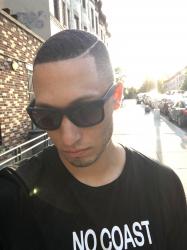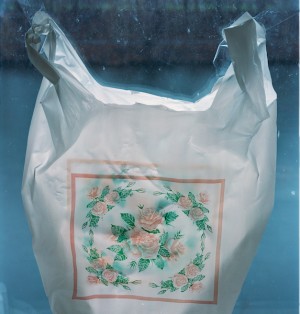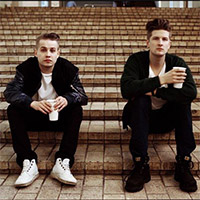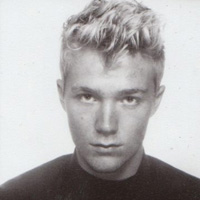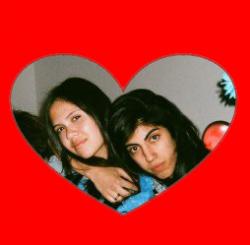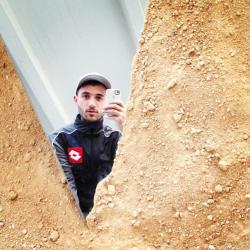Lafayette Anticipation associate curator Anna Colin talks to artist Tyler Coburn about Ergonomic Futures, a speculative project engaged with art, design, science, anthropology and writing. In this interview, Coburn discusses the research, production process and network of collaborators of a multilayered project ultimately concerned with the futures of humankind. Anna Colin: When one comes across your museum seats Ergonomic Futures (2016—) in contemporary art exhibitions—and soon in natural history, fine art, and anthropology museums—they look… [read more »]
Fixed Agency | Private(i)
Fixed Agency is a multidisciplinary art collective working at the intersection of participatory performance and interactive technologies. Consisting of Isaac Eddy, Peter Musante, Rachael Richman, Eva von Schweinitz & Alessandra Calabi, FA is a Visiting Artist at BLDG 92 / The Brooklyn Navy Yard, where they developed Private(i) — a site-specific experience set in the year 2020, where privacy has ceased to exist.

All photos by Alessandra Calabi
Marvin Jordan: I had the chance to attend your first production of Private(i) this past April. It was a really memorable way to discover the Brooklyn Navy Yard, to say the least. How did you manage to create an immersive, mixed-reality narrative in such a vast and complex environment? Were any of you familiar with the BNY in advance, and did their staff think you were crazy at first?
Fixed Agency: Initially, we weren’t familiar with the Brooklyn Navy Yard at all. It was this large mysterious complex of industrial looking buildings behind a fence that didn’t seem accessible to the public. We were in our final year at Brooklyn College’s Performance and Interactive Media Arts program, scouting possibilities for our MFA thesis, and one of us came across the call for submissions for Visiting Artists from BLDG 92 – and we applied. Even before that, we knew we wanted to make a piece outside of a classical theater environment, and when we were accepted as Visiting Artists it opened a whole new universe. Aileen Chumard, Director of Exhibits and Programs at BLDG 92, was familiar with the type of performance experience we had in mind, and the amount of trust and support we have been given from her has been incredible. The Navy Yard is a gift as a setting and it does a lot of the work for us, being very cinematic, providing an unusual perspective of the Manhattan skyline, and the fact that almost nobody has visited it before helps people feel like they’re in a different time and space. We didn’t have a studio nor a lot of money to rent spaces. We spent a lot of time wandering around. At some point, we began entering any building without a closed door, and that’s when the real discoveries began. By the time we started performances in April, we felt that we still had only scratched the surface of what was possible in this vast area.

MJ: Subtracting the current venue from the equation — what would Private(i) look like in a totally different environment, like in an old Soviet missile silo, for instance? Is it largely dependent on the Brooklyn Navy Yard right now, or could it be reconfigured to fit different contexts?
FA: Do you know an old Soviet missile silo where we could do this? Seriously, we are obsessed with the idea to install this piece in different locations. Not only because our residency at the Navy Yard is ending, but also because we want to bring Private(i) to different spaces and countries and work with local performers from their respective communities. The basic structure of Private(i) would likely remain the same – set in the future where privacy is illegal, participants arrive with an alibi, and embark on a secret tour – but the different setting and ensemble would greatly influence and alter certain aspects of the production. The idea is that the underground movement of aloners can exist anywhere, they’re a growing international network and there are no boundaries to where they could open a new aloning HQ. Ideally, it would be a semi-public space, that is either so removed that signal flow is weak, or over-crowded with a lot of technological noise, so it’s easy to go off the grid without getting caught.
We’re thinking Berlin, Alcatraz, Detroit, even Times Square. New York has a couple of interesting islands that would be great spots, too. And about that old Soviet missile silo, is that somewhere in Eastern Europe? Just give us a contact, we’ll go.
MJ: On a historical level, the piece takes place in 2020, giving you the narrative advantage to look back on our actual situation and make retrospective predictions about the near future. Some of these predictions — particularly about biometric wearables and their political implications — are uncanny. How would Private(i) change if the surveillance dystopia it envisions becomes increasingly true? Also, do you work for the NSA?
FA: The decision to set the piece in 2020 rested on the fact that the world of 2020 is very close to our own. 2001: A Space Odyssey was released in 1968, 1984 was published in 1949 – these classic dystopian works present a world that is 30, 40 years away, which is far enough to maintain fictional detachment and critical distance. But six years in the future is a minimal period of time. It is the same generation. The challenge of Private(i) was therefore to build a fictional world that is temporally and geographically almost identical to ours, yet with a handful of key distinctions that enable a reflection on our own tacit complicity with a system of increased economization and politicization of personal data. In other words, we didn’t want our audience to have to actively engage their ‘suspension of disbelief’ in the experience of Private(i). The world they enter when they step in to the Navy Yard is so similar to their own they don’t need to change their behavior or pretend they are something other than what they already are. By virtue of owning a smartphone and carrying it on their person all day long, they already inhabit a reality in which there is no effective privacy. In our rehearsal process with the ensemble, we called the details of 2020, such as social and behavioral developments, new legislation, and important historical events that occurred between 2014-2020, the ‘fictional facts’ of the story-world, in an attempt to confuse the clean duality of fact and fiction. So, to answer your question, we believe the world of 2020 we depict in Private(i) is a simple extension of our own, and it will be increasingly more difficult to be ‘off the grid’. Not just because being connected is an economic imposition on the functional contemporary individual, but because as individuals, we want to be connected, we desire it. Maintaining the desire to dis-connect is the biggest challenge we foresee for the near future.
And no, we don’t work for the NSA.

MJ: What is the significance of “aloning” and the “aloner movement” in your piece? Do you think there’s a relationship between solitude and emotional freedom that is under threat today?
FA: The aloning community is a group of radical activists that challenge the Transparency Act of January 1st, 2020, after which privacy effectively becomes illegal. For reasons of national security, all citizens must wear a Biometric Reporting Device (BiRD) that collects and reports each individual’s biometric and emotional feed. Aloners are an underground community of outsiders that find analog and digital ways to hack their way off the grid and challenge the mainstream acceptance of enforced transparency.
As we use it, the term ‘aloning’ can seem like a contradiction in terms. One of the first things we tell the audience members after we have stripped them of their smartphones, watches, and any other devices that might potentially report biometric data, is that “We alone together”. The logic of the movement, if we can call it that, is that the desire to be ‘off the grid’ is in part a desire to be able to re-connect with each other in ways that are not determined by the constant self-monitoring and self-editing that occurs, as a paradigmatic example, with our social media identity, that increasingly spills over into daily existence. Aloning as a way of connecting with each other in which we give up control over how much we can edit who we are.
We were inspired by a variety sources to flesh out the aloning movement, but some of the key dramaturgical materials came from the Invisible Committee’s inflammatory manifesto The Coming Insurrection, and Édouard Glissant’s simultaneous critique of Western ideals of transparency and call for a universal “right to opacity”.

MJ: So what the hell does “immersive mixed-reality” even mean?
FA: We conceived Private(i) as an immersive mixed-reality adventure on the threshold between the fictional and the real, between the performative and the interactive. There are performers and there are participants, but ultimately the performance is created by how the participant engages in and with the world we lay out for them. The performance is always happening in two simultaneous realities: the reality of the storyworld in 2020, and the reality of an audience at the Brooklyn Navy Yard in 2014. When we strip the audience of their smartphones, for example, it is because we need to hack them off the grid in a world where privacy is illegal. Leaving one’s personal device behind, however, is an act that is equally meaningful and consequential in our present lives. The reasoning behind the performative action is rooted in the fiction, but the truth of the moment applies to something real.
Private(i) is ongoing until Sept. 21, 2014 — book tickets here.







